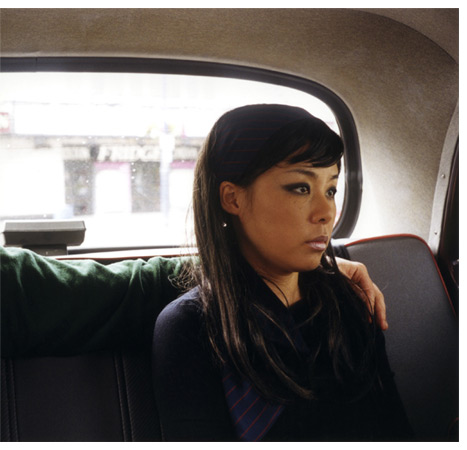The photograph by Nikki S. Lee, ‘Part (14),’ (2002), depicts a woman (presumably Lee herself, as her work often focuses around her interactions with others) in the backseat of a car. The image removes focus from the figure accompanying her (a man, judging from the clothing and hand) by not including his face or body. The main focal point is therefore on Lee’s face and expression. Although the subjects seem fairly close, suggested through the hand gently placed around her shoulder, Lee seems detached and perhaps annoyed. She doesn’t seem to reciprocate the feelings of intimacy, and instead seems distant and distracted, more interested in the view outside the window or perhaps being deep in thought.
The distance between the two also adds to the feelings of separation, as they are not in a close embrace or facing each other, thus implying that they may be having difficulties in their relationship. Lee’s unhappy expression causes the viewer to be interested in her situation – is she unsatisfied with her relationship? Is the relationship abusive? What is she thinking about? The underlying sadness causes the viewer to suspect a darker meaning to the photograph.
Removal of the second figure immediately reduces the couple’s intimacy and adds mystery to the photograph. The dark clothing worn by Lee heightens the mysterious mood. Little is given away about the couple and their destination, and the window lighting enhances the contrast between light and shadows, making the photograph seem more intense and emotive.
The title ‘Part (14)’ also hints at the separation of the couple, drawing attention to the cropping out of part of the image. The viewer may then ask questions about whether the couple has broken up. Including only part of a photograph could imply unhappy memories, evocative of when people cross or cut people out of a photograph, or burn photographs to erase certain memories. The cropped image may not effectively remove the memory, however, as the missing part draws attention to what is missing and the mystery surrounding the unidentifiable second person.

